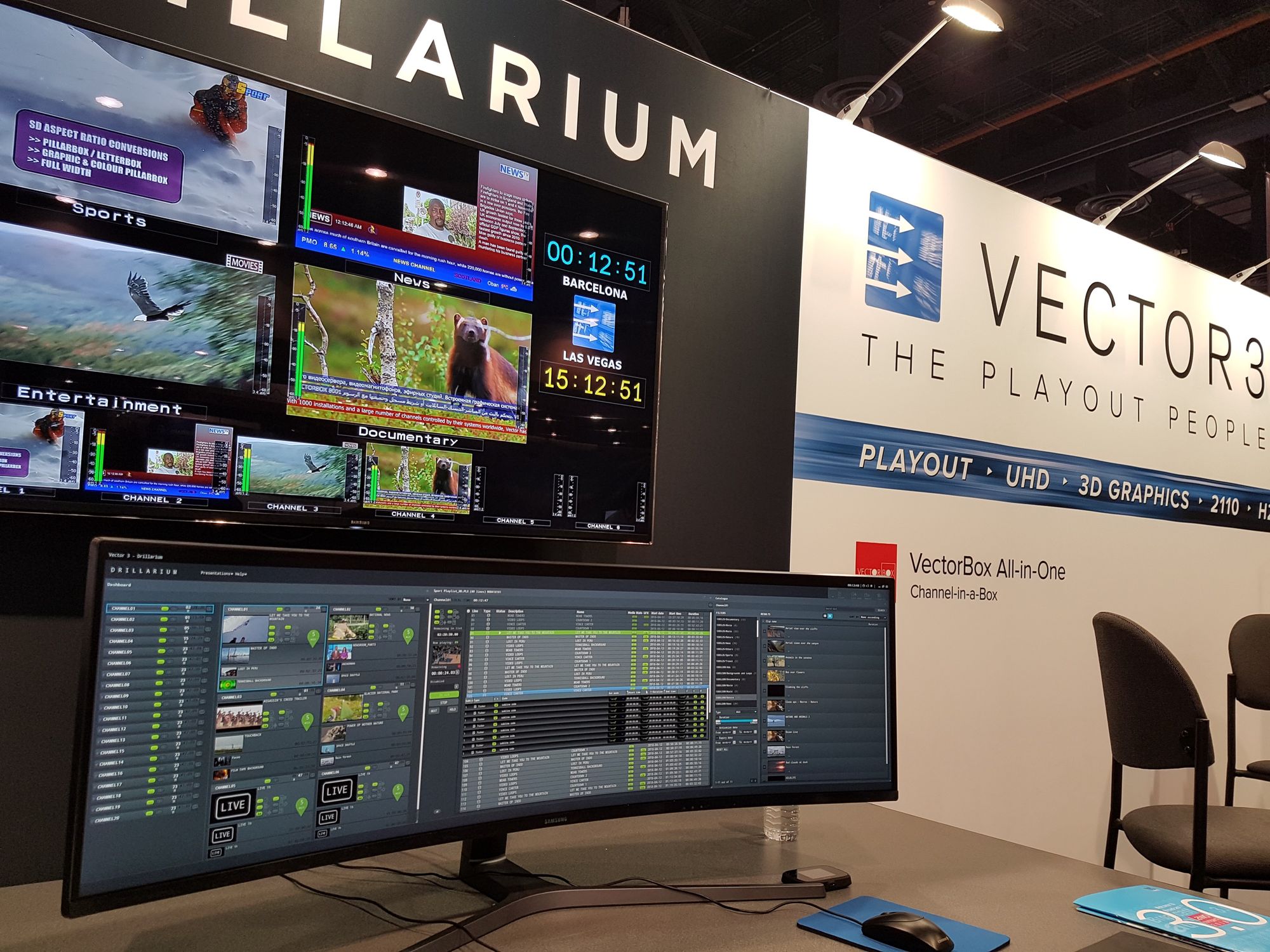Video SDK: new playout engine for Vector 3, Spain

I met Pere and Roman from Vector 3 in their great office in the very centre of Barcelona to learn more about the company and how they used our Video SDK to create a new playout engine that would work seamlessly with Blackmagic Design.
Roman Ceano co-founded the company with his brother more than 30 years ago. Since then their product has evolved from a channel-in-a-box to an advanced modular system consisting of multichannel playout automation, video servers, a workflow engine, channel branding, monitoring and redundancy management. This range of solutions allows Vector 3 to compete with a variety of vendors—from Cinegy to Harmonic.
Roman believes his company has a specific DNA; the core of his motivation has always been to move the broadcast process to software:
We are sure that at some point everything will be done by software and we are looking for a partner who will do that… so, if a new format comes out, we don’t need to worry, because it’s already integrated in the SDK — like HEVC, for instance, or SRT.
The process to select Medialooks as a vendor was not quick, but the way Roman justifies it is both technical and ideological:
The decision from me was to select someone who is moving and not tied to the old broadcast world… The key factor was the broad number of codecs that you support and also a certain sense of dynamics: you look like a company who is moving forward fast. And this was the key question because this market of broadcast is… it doesn’t move very fast. We were in computers before being in TV, so we have this sense of evolution, which in broadcast is not so evident. So when we contacted your company we saw that first you have many-many codecs and you have a will to support as many codecs as possible — so, that was the key question.
The goal of using MFormats was to allow Vector 3 to be more flexible and to react quickly to the demands of the market. The first project was to interface with Blackmagic hardware and to create an IP-only contribution solution that could be based in the cloud. The challenge was understanding how MFormats would interact with the software stack already in use by the company. This is where the modular approach helped: a new version of the playout server was developed, entirely based on MFormats and integrated with all the other modules.
Coding was relatively easy because the team already had experience with GStreamer and DirectShow. Pere Armengol, who is the Technical Director at Vector 3, reflected about the learning curve and benefits of our product:
As it always happens with a new SDK, you have to understand how it works before coding the interface modules to interact the new platform with your own technology. Documentation was very useful, and in this case it is very well written, and when asking about a problem, the answer is generally fast.
From a developer point of view we’ve saved a lot of hours… We spent some time developing over the middleware of MFormats. After we’ve spent this time, to add another card is a matter of days.
He also gave this brilliant description of the SDK:
MFormats is a middleware between most of the broadcast hardware video cards. It also abstracts the FFmpeg library for reading and writing a wide variety of media files or streams and includes the possibility to use GPU cards for AVC or HEVC encoding tasks.
